General
FLUXTEEN in connection with FLUXCOPY is a project by PAW and can be followed step by step in its development in the forum of the "Verein zum Erhalt klassischer Computer e.V.".
FLUXTEEN is a project for copying hard-sectored floppy disks. Yes, you read correctly, with this hardware you can read and write hard-sectored floppy disks with 10, 16 or 32 sectors!
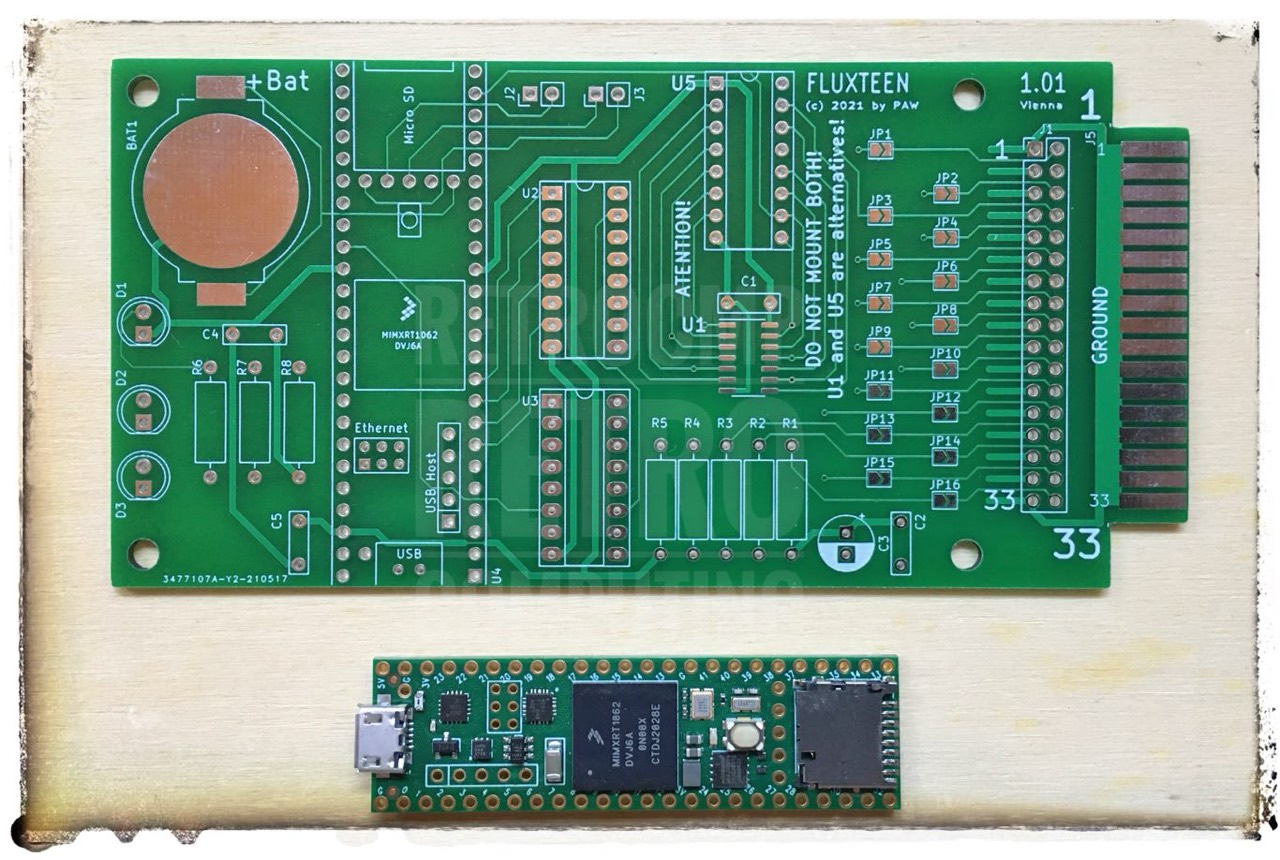
For the project you still need the TEENSY 4.1.
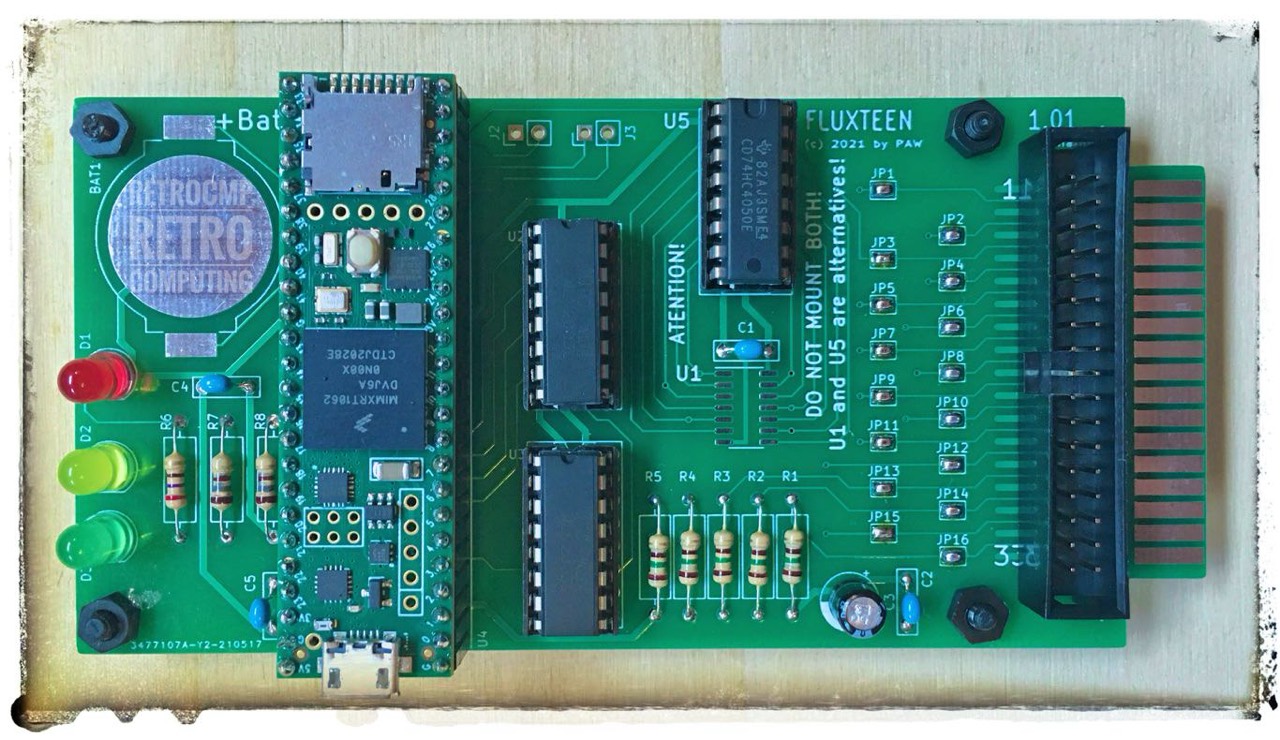
Compared to the previous FLUX classics such as Kryoflux, Greaseweazle, OptionBoard, Catweasel, the FLUXTEEN can not only read the flux change on soft-sectored disks, but also on hard-sectored disks. Hard-sectored floppy disks date back to the 1970s and cannot be read with any IBM PC-compatible floppy controller. Only the Kryoflux can read but not write.
Test Station
I use this teststation also for my KryoFlux and my Greasewezle(s).
- FD-55BV-06-U ............. 360K, DSDD, 300 RPM, 250 kbps
- FD-55GV-20-U ............. 1.2M, DSHD, 360 RPM, 500 kbps
- Mitsubishi M4855 (mod) ... 720K, DSQD, 300 RPM, 250 kbps
- ALPS DF354H .............. 720K/1.44M, DSDD/HD, 300 RPM, 250/500 kbps
- NEC FD1165-FQ ............ 8", 360 RPM, 500 kbps

In contrast to the Kryoflux or Greaseweazle, the FLUXTEEN has a special feature. It uses the original Shugart bus and not the later PC bus. For this reason, you cannot use the usual crossed floppy cable, but have to work with a daisy chain cable if you want to connect several floppy drives.
Tests
Hard-Sectored
8" Floppy Disks
I do not have any hard-sectored "computer". I only have a Shugart SA851 and SA801 and a few old 8" floppy disks from WANG (SSSD, HARD SECTOR). Both can read and write hard sectored floppy disks with 32 sectors.
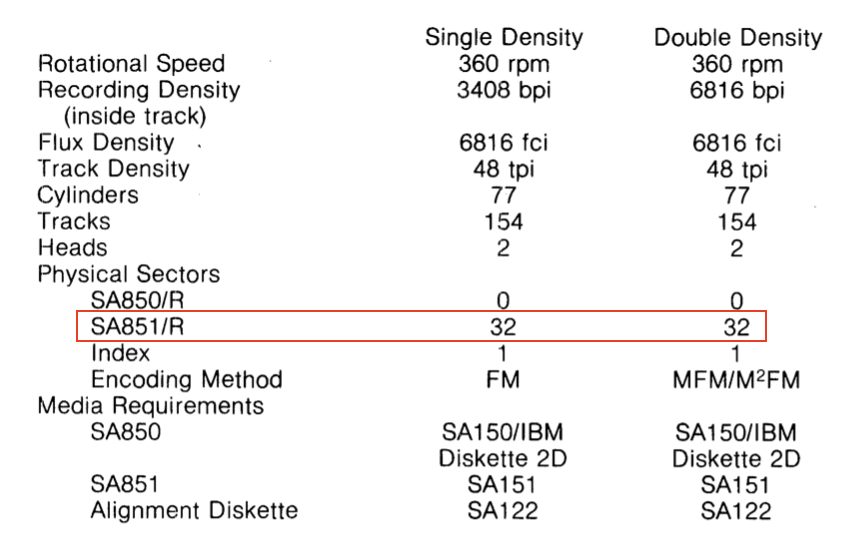
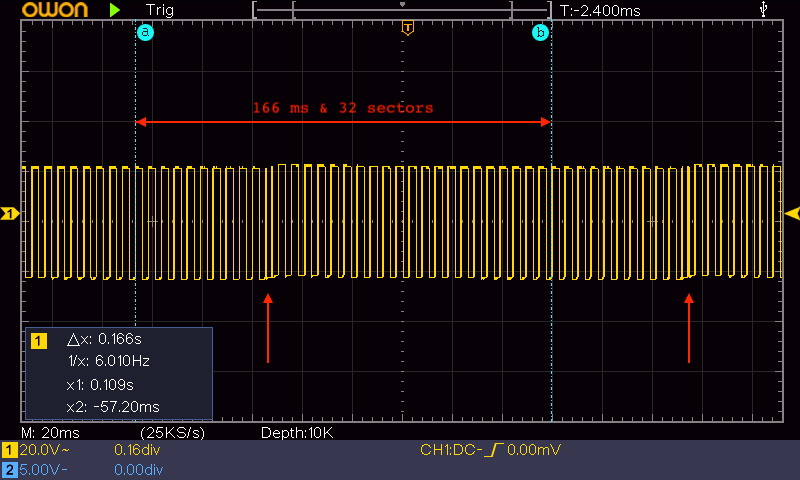
Within the cursors (a) and (b), i.e. at a time interval of 166,667 ms (1 revolution at 360 r/m), you can count exactly 32 sector pulses.
360 r/m => 6 r/s => 1000 ms / 6 r => 166,667 ms/r
If you look at the two red arrows, you will notice that there are visible irregularities. In my opinion, this can only be the index hole, which lies between two sector holes. The distance between the arrows is again 32 sectors; just count them.

If you now divide 166.667 ms by 32, the result is 5.2 ms.
So I thought I'd give it a try. No sooner said than done. And here are the first results.
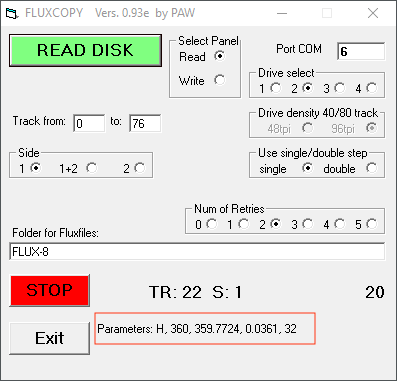
FLUXTEEN recognised the diskette immediately, see parameters "H=>hard-sector, 360=>RPM and 32=>sectors".


And now take a close look at the two pictures above. Do you notice anything? You will find the solution at the end of the page *).

What is immediately noticeable are the two different sector lengths. That is not correct. The correct number should be 128 bytes per sector for SD/FM.
As a test, I read a floppy disk and then wrote to a bulk erased floppy disk with FLUXCOPY and then read and dump it again. Surprisingly, more sectors can be read after the second FLUXDUMP. Very strange.
Update 29.08.2021:
Today I tested my Mitsubishi M2896-63. This is also able to read 8 inch hard-sectored floppy disks with FLUXTEEN/FLUXCOPY. Very nice!
Normally, the sector pulses of 8 inch drives are sent to the floppy controller via line 24 and the index signals via line 20. The electronics of the M2896 must therefore be able to detect even the very short pulse intervals (5.2 ms) and send them correctly to the controller (FLUXTEEN). The actual index signal has a time interval of 166.667 ms at 360 RPM.
5.25" Floppy Disks
According to PAW from Verein zum Erhalt klassischer Computer e.V. you can read hard-sectored floppy disks with the PANASONIC JU475-5.
I have tested the JU474-5. Yes, you can read and write hard-sectored 5.25" floppy disks with 10 or 16 sectors.
If you are wondering where I got hard-sectored disks, the short answer is: from Ebay US. In 2021, a seller in the US was selling hard-sectored NOS 5.25" and 8" floppy disks by the dozen. They weren't exactly cheap, but you only get an opportunity like this once in a lifetime.

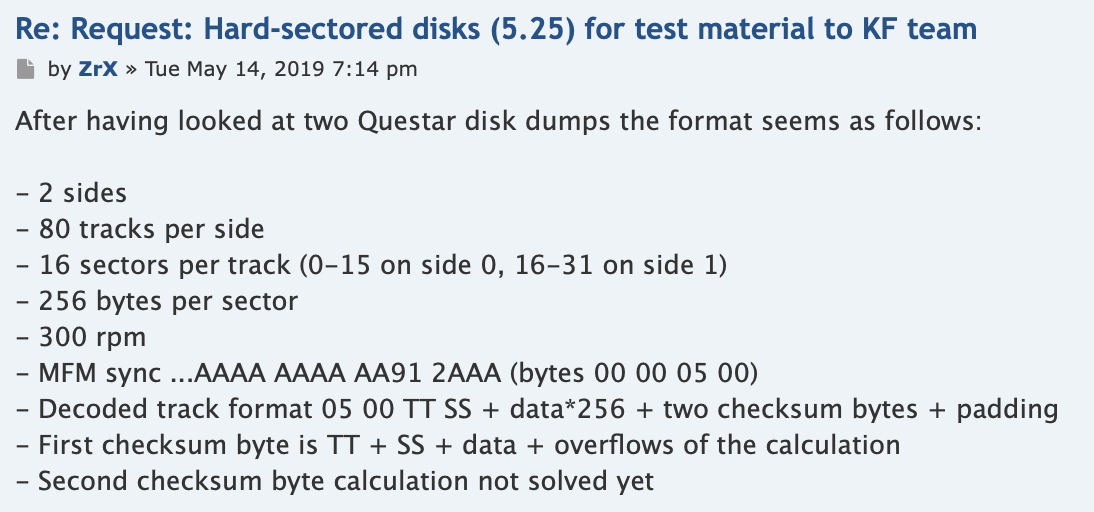
At 300 RPM, one revolution takes exactly 0.2 s or 200 ms. If you now divide 200 by 16, you get 12.5 ms.

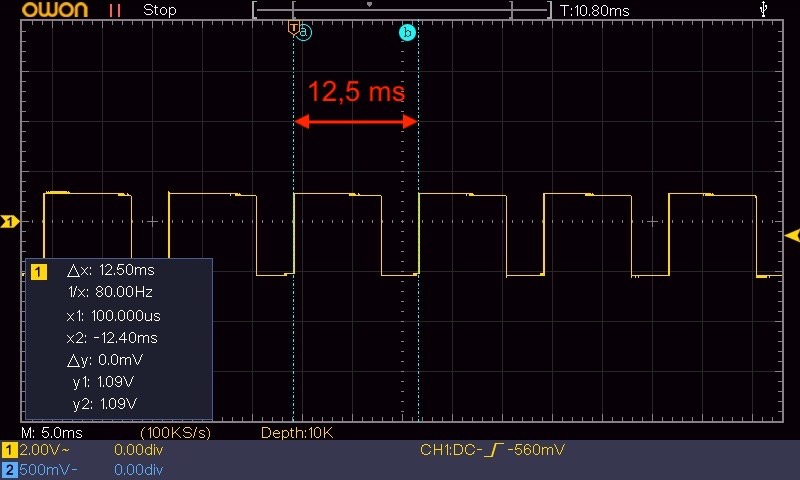
And here is the result as text excerpt of a BULL QUESTAR/M CP/M floppy disk with 16 sectors.
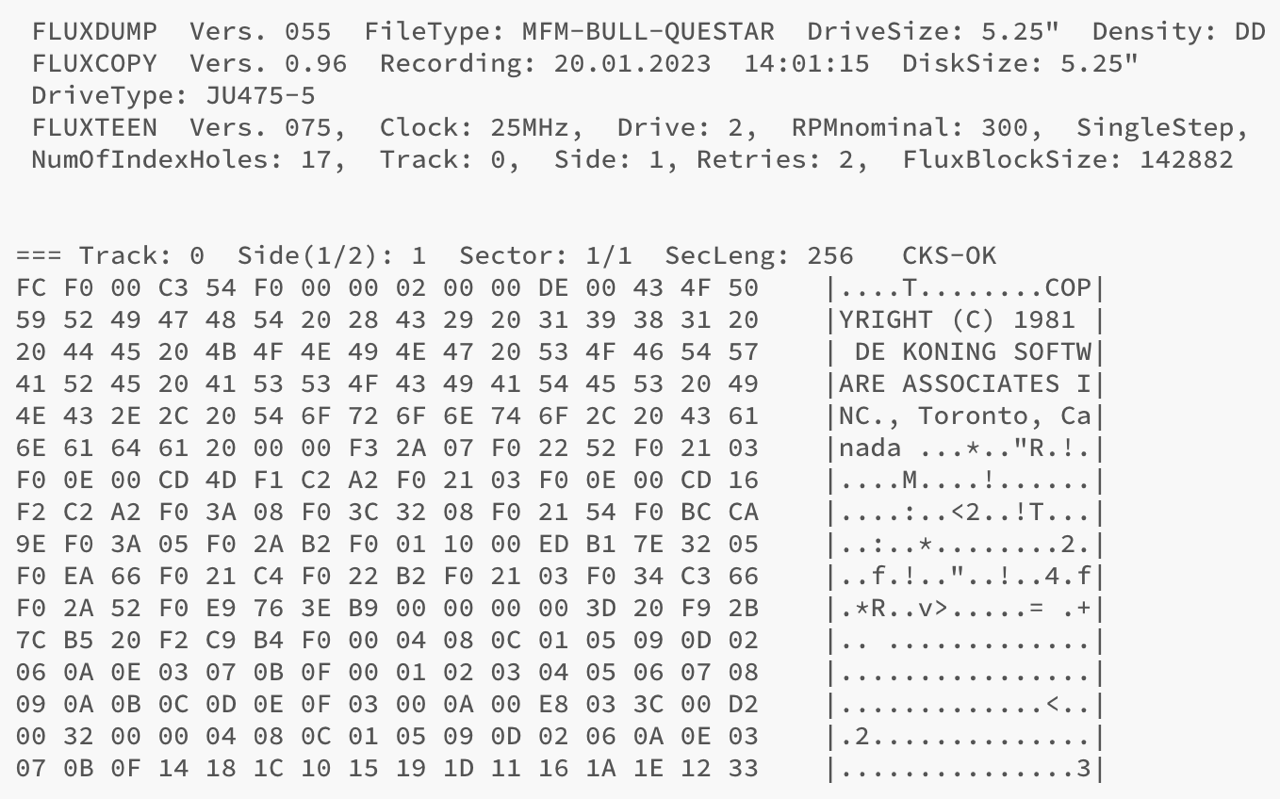
How did I test? PAW has sent me several FLUX images. First I wrote the image to a brand new HS16 floppy disk and then read it out again. Then I did a FLUXDUMP and compared the original and the copy (ASCII files) with MELD. Of course I didn't compare all tracks but track 1 was identical up to the last byte.
External Links
*) The name Georg Buchert's File / G. P. BUCHERT appears on the disk label and in the sector dump.